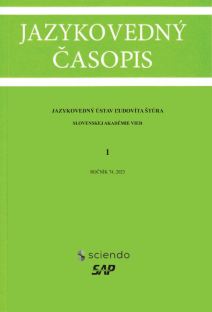Distractor Generation for Lexical Questions Using Learner Corpus Data
Distractor Generation for Lexical Questions Using Learner Corpus Data
Author(s): Nikita LoginSubject(s): Language and Literature Studies, Applied Linguistics, Computational linguistics
Published by: Jazykovedný ústav Ľudovíta Štúra Slovenskej akadémie vied
Keywords: distractor generation; learner corpora; automated question generation
Summary/Abstract: Learner corpora with error annotation can serve as a source of data for automated question generation (QG) for language testing. In case of multiple choice gap-fill lexical questions, this process involves two steps. The first step is to extract sentences with lexical corrections from the learner corpus. The second step, which is the focus of this paper, is to generate distractors for the retrieved questions. The presented approach (called DisSelector) is based on supervised learning on specially annotated learner corpus data. For each sentence a list of distractor candidates was retrieved. Then, each candidate was manually labelled as a plausible or implausible distractor. The derived set of examples was additionally filtered by a set of lexical and grammatical rules and then split into training and testing subsets in 4:1 ratio. Several classification models, including classical machine learning algorithms and gradient boosting implementations, were trained on the data. Word and sentence vectors from language models together with corpus word frequencies were used as input features for the classifiers. The highest F1-score (0.72) was attained by a XGBoost model. Various configurations of DisSelector showed improvements over the unsupervised baseline in both automatic and expert evaluation. DisSelector was integrated into an open-source language testing platform LangExBank as a microservice with a REST API.
Journal: Jazykovedný časopis
- Issue Year: 74/2023
- Issue No: 1
- Page Range: 345-356
- Page Count: 12
- Language: English

